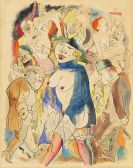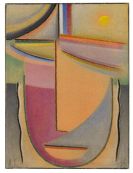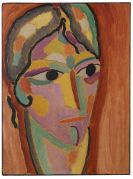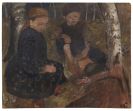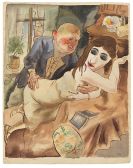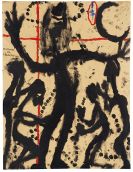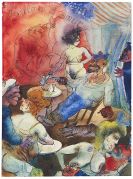
Lucian Bernhard
Stuttgart
1883 -
New York
1972
The designer Lucian Bernhard was born as Emil Kahn in Stuttgart in 1883, adopting his nom d'artiste as a designer and graphic artist in 1905. Lucian Bernhard studied at the Munich Art Academy before going to Berlin in 1901.
In Berlin Lucian Bernhard worked as a commercial artist, designing posters which were notably influenced by the progressive style cultivated by the Beggarstaff brothers, the British artists William Nicholson (1872-1949) and James Pryde (1866-1941).
Lucian Bernhard was one of the most important German poster artists. He played a paramount role in shaping the style of product advertizing posters. The product advertized was combined with the tradename or the company name in large letters and placed against a spacious background in a palette that was downplayed. The lettering used by companies such as Bosch, Kaffee Hag and Pelikan still derives from the models created by Lucian Bernhard.
In 1914 Lucian Bernhard designed a poster for Bosch featuring a greatly simplified sparkplug, aptly topped by the spark it generates, and next to it the name Bosch in densely outlined lettering.
In Berlin Lucian Bernhard belonged to a group of graphic designers who submitted poster designs on a regular basis to the printers Hollerbaum & Schmidt, who were known for their progressive advertizing posters. In the years between 1910 and 1920, however, Lucian Bernhard worked mainly as a designer for the Deutsche Werkstätten Dresden-Hellerau. As artistic director there he designed furniture, wallpaper, carpets and lighting from 1910. In 1920 Lucian Bernhard became the first professor ever for poster art, at the "Akademie der Künste" in Berlin. Three years later Lucian Bernhard moved to New York, where he opened a design studio while continuing to run his Berlin studio. In the US Lucian Bernhard designed new scripts for American Type Founders, creating some thirty-six of them.
Lucian Bernhard also worked as an architect, designing office buildings, factory buildings and numerous private dwellings. Around 1930, however, he completely turned to painting and sculpture.
Would you like to sell a work by Lucian Bernhard?
Infos for seller

